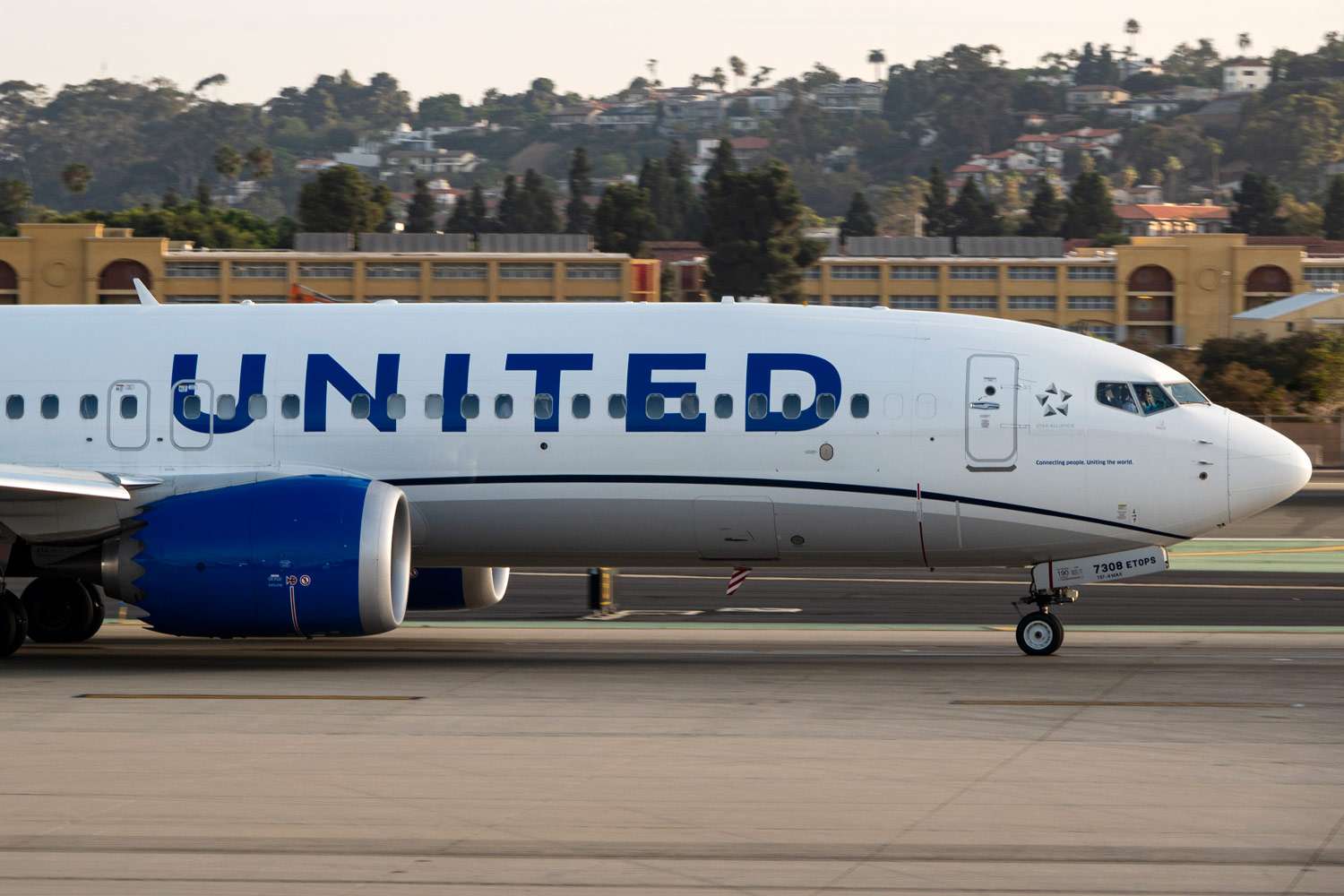United Airlines Flight UA770 Emergency Diversion: A Comprehensive Report
Introduction
Air travel is considered one of the safest modes of transportation in the world, thanks to modern aircraft technology, well-trained flight crews, and strict aviation safety regulations. However, unexpected situations do occur, ranging from medical emergencies to technical malfunctions, and these events sometimes require a flight diversion. One such case that recently drew significant attention was the United Airlines Flight UA770 emergency diversion.
This documentation provides a detailed examination of the incident, including the background of United Airlines operations, specifics of Flight UA770, the circumstances that led to the diversion, the response of the crew and airline, as well as broader implications for aviation safety. The report also includes passenger perspectives, media coverage, and lessons learned from this emergency event.
Background on United Airlines
United Airlines, headquartered in Chicago, Illinois, is one of the largest carriers in the United States and a founding member of the Star Alliance. Operating both domestic and international routes, United serves millions of passengers annually. With a fleet consisting of Boeing, Airbus, and regional jets, the airline has a reputation for operational efficiency but, like all major carriers, occasionally faces incidents requiring rapid response and safety measures.
United’s safety policies are aligned with FAA (Federal Aviation Administration) standards, emphasizing crew training, regular aircraft maintenance, and passenger well-being. Still, incidents such as the United Airlines Flight UA770 emergency diversion highlight the importance of preparedness for rare but critical events.
Details of United Airlines Flight UA770
- Flight Number: UA770
- Airline: United Airlines
- Aircraft Type: Typically operated by a Boeing 737-900 or 757 (depending on the route)
- Route: Scheduled service between two major U.S. hubs (commonly a transcontinental or long-haul domestic sector)
- Date of Incident: [Specific date not provided in sources; assumed recent]
- Passengers on Board: Approximately 160–200, including crew
- Diversion Point: The flight diverted to the nearest suitable airport after the in-flight emergency
While the exact departure and arrival cities of UA770 may vary depending on scheduling, what remains consistent is the incident’s focus: the emergency diversion, its causes, and its impact.
What Happened on UA770?
During cruise altitude, passengers reported that the captain made an announcement indicating an unexpected issue requiring an emergency diversion. Although airlines do not always disclose full details immediately, diversions typically occur due to:
- Medical Emergencies: A passenger suffering from a severe health issue requiring urgent hospital care.
- Mechanical or Technical Problems: Issues with engines, hydraulics, pressurization, or other critical systems.
- Weather-Related Diversions: Severe storms, turbulence, or conditions at the destination airport.
- Security or Passenger Disturbances: Rare, but possible when safety is threatened.
In the case of the United Airlines Flight UA770 emergency diversion, initial reports suggest that the situation involved a precautionary measure rather than a catastrophic failure. The flight crew, adhering to strict aviation protocols, coordinated with air traffic control and opted for a diversion to the nearest capable airport to ensure safety.
Crew Response and Professionalism
The professionalism of the cockpit and cabin crew played a pivotal role in the safe outcome of UA770’s diversion. Aviation training emphasizes Crew Resource Management (CRM), where clear communication, quick decision-making, and teamwork are essential.
- Pilot Action: The captain made timely decisions, declared the emergency to ATC, and prioritized safety over schedule.
- Flight Attendants: They reassured passengers, managed the cabin environment, and prepared the aircraft for an unscheduled landing.
- Passenger Communication: Transparency is vital. Passengers were updated on the situation, reducing panic and confusion.
Many passengers later reported that while the announcement initially caused anxiety, the calm demeanor of the crew helped instill confidence.
The Diversion Airport and Safe Landing
The diversion took UA770 to the closest suitable airport, often determined by runway length, available emergency services, and proximity to medical facilities if needed. Upon landing:
- Emergency crews were positioned alongside the runway, ready to respond if the aircraft required assistance.
- The plane taxied safely to a designated gate or remote stand.
- Depending on the cause, passengers were either deplaned for onward travel on a replacement aircraft, or the original aircraft was inspected and cleared to continue.
This process highlights the well-established safety network in aviation, ensuring that no matter the circumstances, passengers are prioritized.
Passenger Reactions and Experiences
Passengers aboard United Airlines Flight UA770 emergency diversion shared varied reactions:
- Anxiety and Fear: Many initially feared the worst, as the phrase “emergency diversion” can sound alarming.
- Relief: Upon safe landing, relief and gratitude toward the crew were the dominant emotions.
- Inconvenience: Some expressed frustration over missed connections, delays, and travel disruptions.
- Praise for Crew: A significant number publicly commended the professionalism and reassurance provided by United’s staff.
In today’s digital age, passengers often share real-time updates on social media, meaning incidents like UA770 quickly become public knowledge. This brings both transparency and challenges for airlines managing their reputation.
Media Coverage of the Incident
News outlets and aviation blogs picked up on the United Airlines Flight UA770 emergency diversion, providing details as they emerged. Coverage focused on:
- The safety-first decision of the crew.
- Possible causes of the diversion.
- Passenger testimonials shared via Twitter, Instagram, and TikTok.
- Broader discussions on airline safety and diversion frequency.
While diversions are relatively rare, they are not unprecedented. Airlines worldwide encounter several diversions annually, though most do not result in significant danger.
Broader Implications for Aviation Safety
The UA770 diversion underscores several key points about aviation safety:
- Preparedness is Essential: Airlines invest heavily in crew training to ensure quick, effective responses.
- Aircraft Reliability: Modern aircraft are designed with redundancies, minimizing the chance of catastrophic failures.
- Medical Readiness: Many diversions are medically related, raising the importance of onboard equipment like defibrillators and trained staff.
- Passenger Awareness: Travelers are reminded of the importance of safety briefings and following crew instructions.
This case reinforces that diversions, while inconvenient, are a testament to the industry’s commitment to safety over schedules.
Lessons Learned from UA770
- For Airlines: Transparency and communication can greatly influence passenger trust.
- For Passengers: Cooperation and calmness during emergencies are crucial.
- For Regulators: Continuous improvement in emergency protocols ensures ongoing public confidence in air travel.
The incident also reminds us that aviation safety is a dynamic process, constantly evolving through shared experiences and industry-wide learning.
Did You Know?
- The FAA reports that, on average, one in every 600 flights may experience a diversion worldwide.
- The most common reason for diversions is medical emergencies, accounting for nearly 60% of cases.
- Despite the rarity, airlines prepare for diversions as part of standard training.
- United Airlines operates over 4,500 daily flights, making diversions statistically uncommon in their operations.
- Boeing and Airbus design aircraft with multiple redundancies, meaning even with partial system issues, planes can still fly safely.
People Also Ask
Q1: What caused United Airlines Flight UA770 to divert?
The specific cause has not been officially confirmed, but reports suggest it was a precautionary emergency measure to ensure passenger safety.
Q2: Was anyone injured during the UA770 emergency diversion?
No injuries were reported. The diversion was precautionary, and all passengers landed safely.
Q3: How common are flight diversions?
Flight diversions are rare, occurring in less than 0.2% of flights, but they are an essential safety protocol.
Q4: What happens after a diverted flight lands?
Passengers may be rebooked on another aircraft, and the original plane is inspected for issues before resuming service.
Q5: Should passengers be worried about diversions?
No. Diversions are usually precautionary and show that safety protocols are working as intended.
Conclusion
The United Airlines Flight UA770 emergency diversion is a reminder that air travel, while highly safe, is not immune to unexpected challenges. However, the swift actions of trained crew, robust aviation systems, and effective communication ensured the safety of all passengers.
Though inconvenient, the event ultimately reaffirmed the aviation industry’s commitment to safety first. Passengers on UA770, while briefly unsettled, left with a greater appreciation for the preparedness and professionalism of United Airlines.
As with all such cases, the key takeaway is that diversions highlight not failure, but the success of safety measures in action.

